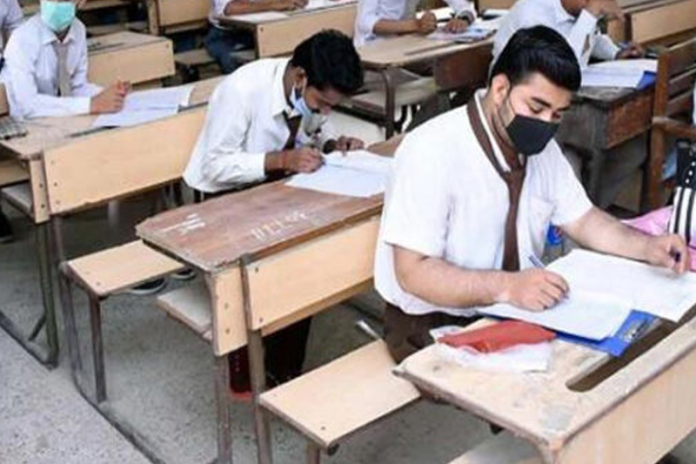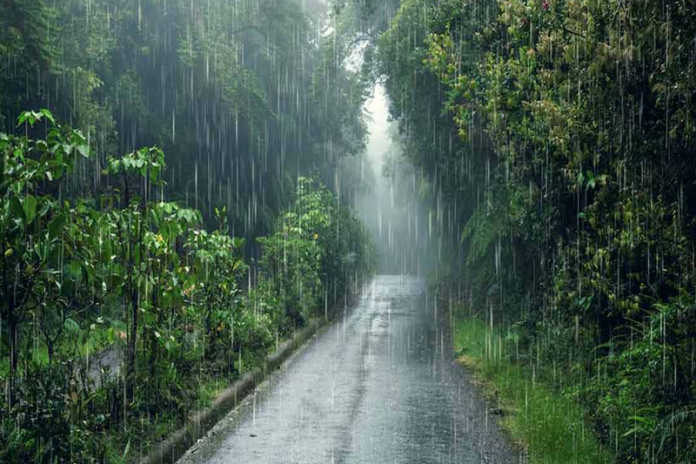The danger of floods looms large

- 163
- 0
This year the intensity of heat is much higher than usual. The weather has improved a bit with the arrival of the monsoon, but the heat has not allowed business life to return to normal yet.
At the same time, floods in streams, canals and rivers due to rains have exposed the whole country to the dangers of flood situation. The Govt has directed the National Disaster Management Authority, PDMAs, Rescue and Relief, Civil Defense, District Administration and other related institutions to be on high alert to deal with the upcoming difficulties and they will be on high alert until August 25th. The Federal and the provincial governments have been alerted to also monitoring the severe spell dashboard itself. The areas adjacent to the Chenab River may be more affected by the threat of floods, therefore the Govt has directed the institutions to keep the people of the concerned areas fully aware of the flood situation and ensure advance safety measures.
Every year during the monsoon rains and floods in Pakistan cause serious damage to human lives, livestock, residential houses and crops. Verbal claims of proactive measures are often made but rarely acted upon. Pakistan is currently suffering from severe economic crisis. Disasters of floods can increase this further, so it is important that the concerned institutions remain vigilant and reach out to help people wherever needed. Special attention should be given to relief activities in tourist areas where landslides and flood hazards make travel impossible. It is expected that aid agencies will face this challenge well. Water levels in rivers, barrages and dams are rising while India is unlikely to release floodwaters in Ravi, Beas and Sutlej, which could affect many people and agricultural lands in Punjab and Sindh.
Many countries face heavy rains and floods, but developed countries are largely protected from the damage due to their abundance of resources and modern technology. While rising temperatures have gripped South Asia for the past few years, Pakistan has been suffering from an unusual monsoon season and due to lack of resources and management, a large number of human lives and crops have been lost. After the rainy season, rains are generally less in the country. This situation affects agriculture. World experts have been warning about this in advance. There are feasibility reports for constructing thousands of small and medium dams in Upper Punjab, Khyber Pakhtunkhwa, Balochistan, Azad Kashmir and northern regions, which could provide opportunities for hydropower generation along with agriculture. The Chief Meteorological Department and the National Disaster Management Authority (NDMA) have predicted heavy rains across the country, keeping in mind that timely arrangements should be made by the relevant departments and the provincial ministries of health, an inevitable requirement of the situation. NDMA has issued high alert in various cities of the country in view of the risk of heavy rain with strong winds, flooding in rivers and urban flooding.
Monsoon rains have started. The hill streams of Islamabad, Rawalpindi, Murree Guliyat, Mansehra, Kohistan and Abbottabad may overflow. Flood situation may arise in Dera Ghazi Khan, Dera Swat, Kashmir. Medium and high level floods in Chenab river and landslides in hilly areas of Khyber Pakhtunkhwa are feared. There is a risk of urban flooding in Lahore, Sialkot, Gujranwala, Narowal, Rawalpindi, Faisalabad and Peshawar. Urban flooding is called when a flooding situation occurs in urban areas, i.e. water overflows the drains and rivers of a city and enters the houses of citizens. According to NDMA, heavy rains are expected in most of the divisions of Punjab. Every year there are high claims but people have to suffer heavy losses due to heavy rains and floods. The effects of past flood disasters are still there. Unsettled population, poor sewage system, non-cleaning of drains, their shrinking, lack of water storage arrangements and administrative weaknesses have made monsoon a natural disaster. In the light of past experiences, integrated strategies, comprehensive plans and pre-emptive measures are essential. Combating the effects of climate change has become a big challenge for the country.
Millions of people were affected in the four provinces of Pakistan due to the floods caused by the unusual and prolonged monsoon rains last year. More than eleven hundred people died in 110 districts while the lives of more than three and a half crore people were affected. Nine and a half lakh houses were completely or partially destroyed while more than eight lakh cattle were killed. Sindh province was the most affected due to this flood where more than 50 lakh population of 16 districts have been displaced or affected due to flood. The speed with which the planet is heading towards hell-like heat due to rising temperatures can be gauged from the revelation that global temperatures have been on record for the first time in just twelve months. As reported earlier, Earth's temperature has increased by 2.7 degrees Fahrenheit or 1.5 degrees Celsius. In the light of the data released by the European Union's Copernicus Climate Change Service, scientists have warned that the earth is rapidly moving towards a catastrophic end. According to the report, El Niño and global warming combined to make last year the hottest year in the last 100,000 years. This increase has happened only during February 2023 to January 2024. Climate experts have rightly warned that if the world's energy production does not shift away from fossil fuels such as coal, oil and gas to renewable sources, irreparable losses will be faced. It is particularly noteworthy that most of the non-renewable fuels are used in developed countries, but developing countries are suffering the consequences. The region of Pakistan, Nepal, India and Bangladesh with a population of almost two and a half billion is facing serious threats from the rising ground temperature. The National Disaster Management Authority (NDMA) has issued a flood alert for Khyber Pakhtunkhwa, warning of heavy rains in the region from August 14 to 18. The alert follows forecasts from the meteorological department, predicting significant rainfall across various parts of the province.

















































